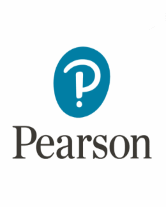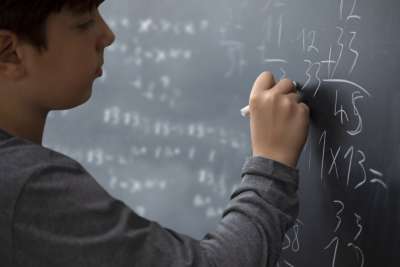Objective
Math students in middle school will use estimation to approximate values, angle, and area measurements of a triangle.
Materials
paper
pencil
string
Procedure
Demonstration
Explain to students that they are going to work as a class to estimate the measurements of several angles and compare the estimates with measured values. Then, students will work in groups of four to estimate a traingle's angles and area. Explain that this lesson covers two benchmark units, degrees and centimeters.
Draw two triangles on the chalkboard, and write the base and height for each: first triangle, height = 732 and base = 1239; second triangle, height = 128 and base = 985. Have students select an acute angle from the first triangle, and show them that they can visualize whether the angle is less than or greater than 90 degrees. Then have them determine if the angle is less than or greater than 45 degrees. This will help them narrow the angle's range to 45 degrees (0-45 or 45-90). If the angle is less than 45 degrees, students can determine whether the angle is closer to 0 or 45 degrees. Guide them through this process for the first triangle, and then repeat the process for the second triangle. Prompt them with questions about the angle's relation to 0, 45, 90, 135, and 180 degrees to help them narrow the acceptable range, and then have them make their estimate. Finally, have students measure the actual angles and compare the estimates with measured values.
Have students estimate the area for each triangle by estimating the product dictated by the formula for the area of a triangle (area = [base/2] x height) and document their process in their notebooks. Explain that they should choose numbers that are close to the originals, but are easier to work with. For example, with the parameters given for the first triangle, a student might say,
"The base is 1239, which is very close to 1200, so I will divide that by 2 to get 600.
600 x 732 is difficult to calculate, but 732 is very close to 700, and
600 x 700 = 420,000."Have students calculate the actual area with the exact measurements and compare these measurements to their estimates. The actual area of the first triangle is 453,474, so the estimate is only off by 7% (453,474 - 420,000/453,474 = .07 = 7%).
Guided Practice
Divide the class into groups of four. Have three of the students face one another, and provide them with a string approximately 10 feet in length. Have each student tie his or her string to another student's so that they form a triangle. Have students estimate the angle they create at their vertex (the point at which they hold the string). Ask the fourth student to record the estimates on a sheet of paper, add the three estimates, and compare the sum to 180 degrees. The sum of the angles of a triangle is equal to 180 degrees, so the addition of the estimates should be somewhere between 170 and 190 degrees. If the sum of the estimates is outside the acceptable range, discuss possible reasons why. Next, have the fourth student use a protractor to measure each of the angles and record the actual angle measurements. The fourth student should share this information with the rest of the group.
Have the four students estimate the base and height of the triangle in centimeters and then estimate the area by performing the calculation in their heads. They should use estimation techniques for the base and height of the triangle as well as for the area.
For example, if the estimate for the base is 68 centimeters, and the estimate for the height is 81 centimeters, students might estimate 68 x 81 is similar to 70 x 80 so the estimated area is (70/2) x 80, or 2800.
Emphasize that the best way to estimate the product of two numbers is to either round the numbers up or down or to use a substitute number that is easier to work with. Answers will not be exact, but the estimates should be reasonable. Have the fourth student record all estimates and then measure the base and height of the triangle (in centimeters). Finally, have the fourth student calculate the area and compare the actual value to the estimates.
Assessment
Have students write a short paragraph that describes how they arrived at their estimates for the triangle's angles and area. Collect their paragraphs, and evaluate their understanding of the estimation process. As a final evaluation, have students draw two triangles with different measurements on one sheet of paper. Have them estimate both triangles' angles and areas. They should provide estimates for the lengths of all sides as well as a computational estimate of the area. Evaluate the estimates to determine if students are able to estimate proportionally. For example, if one side is obviously longer than another, be sure estimates reflect that. For the angle measurements, evaluate students' ability to estimate angles and their relation to well-known angles in addition to how close the sum of the estimates is to 180 degrees. For the estimate of the area, evaluate students' choices of suitable alternate numbers with which perform computational estimates.

Math students in middle school will use estimation to approximate values, angle, and area measurements of a triangle.





